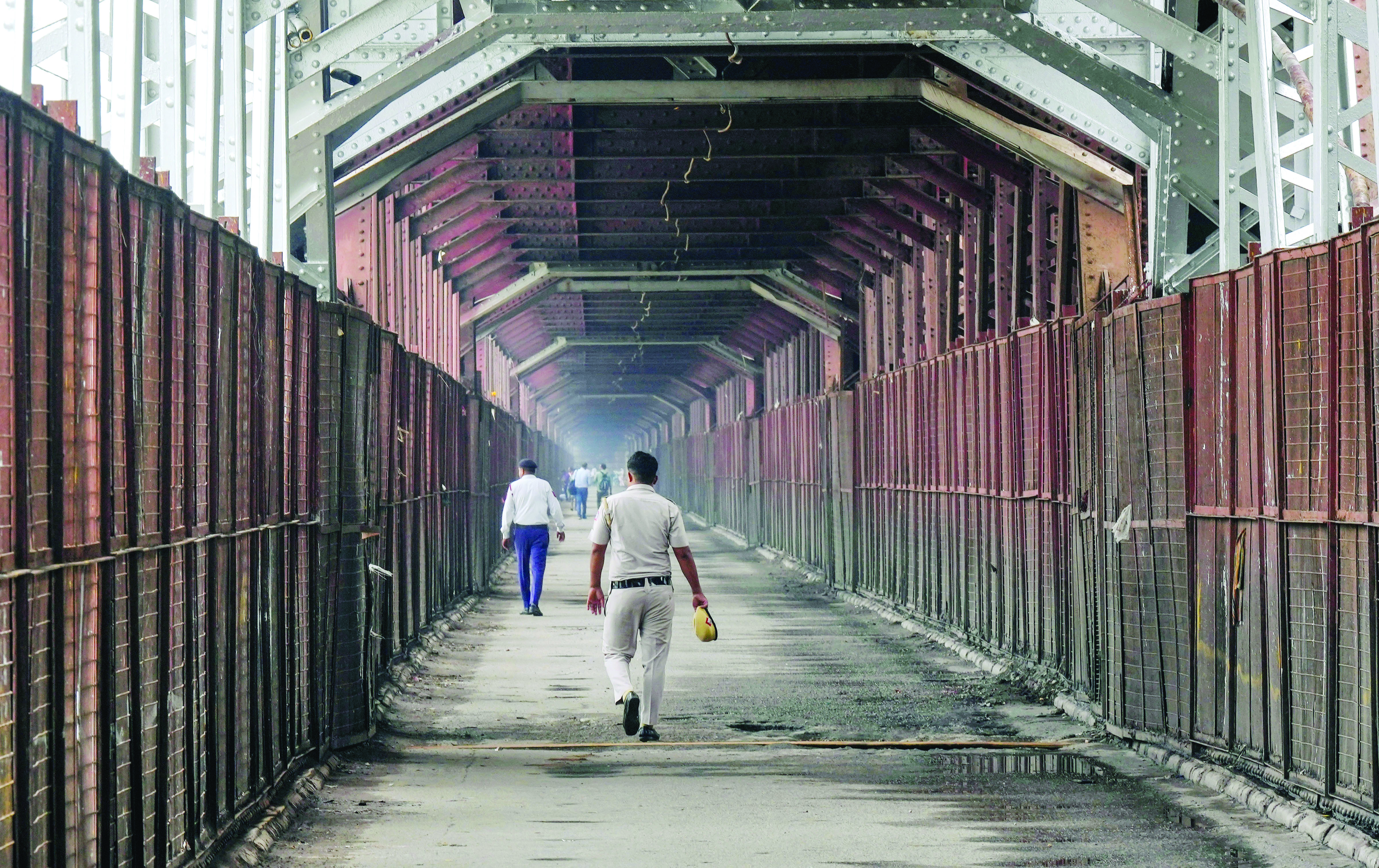Delhi’s Yamuna bridge: Railways’ old ‘warhorse’, first opened for traffic in 1866

New Delhi: The historic Yamuna Bridge here whose construction over 150 years ago was considered an extraordinary engineering feat, was first opened for traffic in 1866, connecting Calcutta and Delhi on a continuous rail network for the very first time.
The old bridge, popularly referred to as ‘lohey ka pul’ (iron bridge) has witnessed many floods in its over a century-and-a-half journey, so much so that it is also a reference point for measuring danger level for Yamuna water levels.
The mighty river has been in spate for the last week, swelling to 207.71 metres on Wednesday, breaching its all-time record of 207.49 metres set in 1978, inundating several key areas in Delhi, after submerging the floodplains.
With the raging river waters lapping close to its base, the landmark bridge — a major lifeline of the Indian Railways — has been temporarily closed for traffic movement as the river exceeded the evacuation mark earlier in the week.
After breaching the 45-year record, water levels in the Yamuna in Delhi came down to 207.98 metres at 11 pm on Friday, from 208.66 metres at 7 pm on Thursday, three metres above the danger mark of 205.33 metres.
Indian Railways officials and experts who have done extensive research on bridges, buildings and network expansion of the railways, term the old Yamuna Bridge as a “priceless heritage of India”.
“It is an old iron horse that has been galloping across the Yamuna River since the 1860s. It has witnessed the steam era, diesel period and the electric locomotives,” P K Mishra, a senior official of the Indian Railways said.
Mishra, a former additional general manager of South Western Railway (SWR) and an ex-divisional railway manager of Asansol Division is an ardent railway heritage enthusiast and has authored several articles on the monumental landmarks in the eventful journey of
the railways in India that began with the inaugural run from Bombay (now Mumbai) to Thana (now Thane) on April 16, 1853.
The Delhi-Howrah line was built by the erstwhile East Indian Railway (EIR), “one of the most successful British-era railway companies with very high professional standards”, according to the book “Bridges, Buildings & Black Beauties of Northern Railway.
The book, authored by Vinoo N Mathur, a former general manager of the Northern Railway, also charts the history of the construction of many railway bridges in undivided India, including the “great bridges” over Yamuna at Allahabad and Delhi.
The old Yamuna Bridge, identified as ‘Bridge No. 249’ in railway parlance is situated on the Delhi-Ghaziabad section, and was constructed initially as a single line, at a cost of 16,16,335 pounds, says the over 450-page book which also features some of the rare images of the bridge.
The site for construction was earmarked in 1859. It had a total length of 2,640 ft and consisted of 12 spans of 202 ft each. The superstructure consisted of steel lattice girders, it says.
In 1913, the bridge was converted into a double line and later in the 1930s some of the spans were re-girdered and the roadway below was widened.
The bridge was taken over by the North Western Railway in 1925 and is currently under the Northern Railway.



